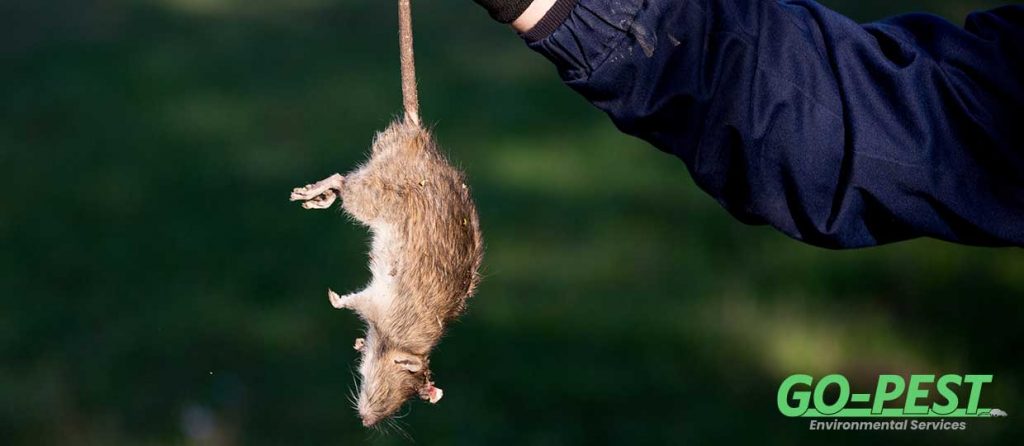What Happens When Rubbish Becomes a Pest Magnet
Any place where waste accumulates provides food, moisture, and shelter—three essentials for many unwanted species. Whether it’s a kitchen bin, an outdoor wheelie bin, or a commercial dumpster, rubbish left unmanaged creates ideal breeding and feeding grounds. Understanding which pests are drawn to different kinds of waste is the first step toward preventing infestations.
Rodents: Rats and Mice
Food scraps are irresistible to rodents. Rats and mice have a keen sense of smell and can detect edible material from a surprising distance. Overflowing bins, poorly sealed bags, and spilled liquids all act like a dinner invitation.
Rodents are particularly problematic because they chew through packaging, wood, and even wiring, creating structural damage and fire hazards. They also reproduce quickly, so what starts as a small problem can escalate rapidly if conditions stay favorable.
Prevention Tips for Rodents:
- Store rubbish in sealed, heavy-duty bags.
- Use bins with tight-fitting lids.
- Clean bin areas regularly to remove food residue.
Flies and Maggots
Fly populations increase wherever organic waste builds up. Fruit, vegetables, meat, and damp paper all serve as breeding material. When flies land on decaying food, they lay eggs that develop into maggots within a day or two. Warm temperatures accelerate the cycle, making summer an especially active period for fly infestations.
Different types of flies target different types of waste:
- House flies are drawn to almost all kinds of food waste.
- Blow flies prefer rotting meat and animal remains.
- Fruit flies thrive on fermenting fruits and sugary liquids.
Beyond being unpleasant, flies can spread bacteria onto surfaces and food inside homes or businesses.
Prevention Tips for Flies:
- Empty bins frequently.
- Wash and disinfect bins after each collection day.
- Keep food scraps in closed containers until disposal.
Cockroaches
Cockroaches excel at exploiting waste. They thrive on crumbs, grease, cardboard, and even soap scum—anything with organic matter. They’re most likely to appear in dark, damp spaces like the underside of kitchen bins, commercial trash rooms, and recycling areas. Once they establish a foothold, they’re difficult to eliminate without professional help.
Cockroaches are a health risk because they contaminate surfaces and trigger allergies. They’re nocturnal and secretive, so by the time they’re seen, the population is often well established.
Prevention Tips for Cockroaches:
- Avoid leaving rubbish inside overnight.
- Seal cracks and crevices around bin storage areas.
- Use residual insecticides in problem zones if infestations persist.
Ants
Ants often go unnoticed at first because they work in organized trails. They’re drawn to sweet or greasy leftovers in bins, compost heaps, or recycling containers. Once a scout ant discovers a food source, it signals the colony, leading to a steady procession.
Some species, like pharaoh ants, are especially problematic in hospitals, restaurants, and residential buildings. They’re small enough to access sealed containers and reproduce within wall voids.
Prevention Tips for Ants:
- Rinse recyclables before placing them in bins.
- Keep bin lids tightly closed.
- Treat ant trails with bait rather than sprays to reach the colony.
Wasps and Bees
Open bins containing sugary drinks, fruit waste, or fermenting liquids can draw wasps during warmer months. Wasps aren’t scavengers on the same scale as flies or rodents, but once they locate a reliable food source, they’ll return and sometimes establish nests nearby. Their stings make them a hazard around homes, schools, and outdoor eating areas.
Honeybees are less common at rubbish sites but may show up if sugary liquids spill. Unlike wasps, they rarely nest near waste areas unless there’s a cavity that feels like a hive site.
Prevention Tips for Wasps:
- Wash beverage cans and bottles before disposal.
- Keep outdoor bins shaded and closed.
- Have nests professionally removed rather than attempting DIY removal.
Wild Animals: Foxes, Badgers and Stray Cats
In suburban and rural areas, food-rich bins attract larger scavengers. Foxes, badgers and stray cats are all drawn to easily accessible rubbish. They tear open bags, scatter waste, and may carry parasites or diseases.
Because these animals are larger and more persistent than insects, standard bin lids may not be enough. Heavy-duty containers or animal-proof locks can help.
Prevention Tips for Larger Scavengers:
- Use bins with lockable or weighted lids.
- Avoid leaving pet food or meat scraps outside overnight.
- Install motion-sensor lighting to discourage nighttime visitors.
Stored Product Insects
Not all pests are obvious. Some insects, like Indian meal moths, flour beetles, or grain weevils, develop inside food packaging. When expired or damaged dry goods are discarded, these insects may emerge in bin areas, migrate indoors, and infest pantries.
Though they don’t bite or sting, stored product insects can ruin food supplies and are hard to remove once established.
Prevention Tips for Stored Product Insects:
- Dispose of infested goods in sealed bags.
- Clean up spilled grains or flour around bins promptly.
- Keep dry goods in airtight containers to prevent infestations from starting.
Mosquitoes
Mosquitoes aren’t drawn to food waste but to moisture. Liquids that collect at the bottom of bins, clogged drains, or standing water in discarded containers can become breeding sites. One small pool of stagnant water can support hundreds of larvae.
Prevention Tips for Mosquitoes:
- Empty liquid from cans and bottles before disposal.
- Drill drainage holes in outdoor bins if appropriate.
- Keep bin areas dry and free of standing water.
Other Common Visitors
- Beetles and earwigs can show up in compost-rich waste.
- Spiders are drawn indirectly, feeding on insects attracted to bins.
- Birds like gulls, pigeons, and crows raid open trash and scatter debris.
All of these can contribute to unsanitary conditions and secondary infestations.
How to Make Your Rubbish Less Attractive
Controlling pests around rubbish isn’t just about using the right bin. It’s about reducing food, shelter, and moisture:
- Double-bag food waste before disposal.
- Schedule regular bin cleaning with hot water and disinfectant.
- Position bins away from doors and windows to reduce migration indoors.
- Use liners and close them tightly to contain odors.
- Maintain the surrounding area—trim weeds, clear clutter, and repair leaks.
Combining these habits with prompt professional intervention when needed keeps pest issues under control.
Turning Rubbish from a Pest Problem into a Non-Issue
Rubbish will always be part of daily life, but infestations don’t have to be. By knowing which pests are attracted to different types of waste and making small adjustments to storage and disposal practices, homes and businesses can dramatically cut down on unwanted visitors. Staying ahead of the problem not only protects property but also keeps environments healthier and more pleasant.


